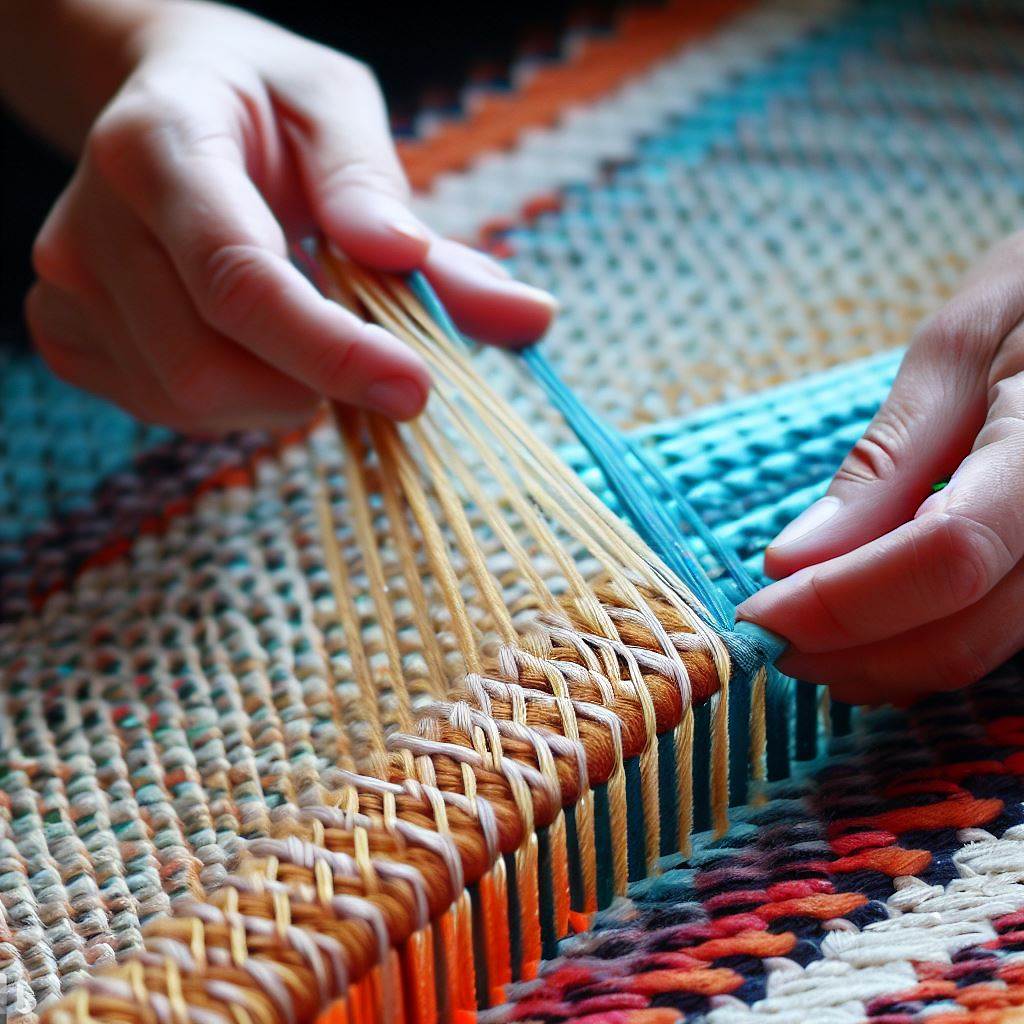Creating Rugs on a Budget: Craft Beautiful Textiles with Thriftiness
Finding Inexpensive Looms for Beginners
Looms represent the biggest upfront investment for new weavers. Luckily, many budget-friendly options allow getting started for less than $100.
Small handheld rigid heddle looms offer versatility for compact spaces. Simple rectangular frames with nails serve as no-frills floor looms. Handbuilt looms from scrap wood only cost materials and elbow grease.
For extra savings, used looms often sell on resale sites at discounted prices from weavers upgrading equipment. Portability makes them easier to transport. Basic functionality satisfies newbie needs.
With an inexpensive starter loom, beginners can determine if weaving becomes a passion before investing further. Building skills using humble materials embodies rug making traditions.
Discovering Found and Repurposed Weaving Materials
Part of rug making’s beauty lies in transforming discarded materials into cherished new pieces. Foraging for fabric scraps and fibrous finds appeals to the thrifty weaver’s spirit.
Old ragged t-shirts get recycled into strong weft cores for rag rugs. Fabric remnants from seamstresses become vivid repurposed yarn. Thrifted wool sweaters unfold into bundles of free fiber.
Burlap coffee sacks offer sturdy natural material. Plastic bags upcycle into plarn weft additions. Natural vines or reeds collected outdoors add organic texture.
With creative thinking, humble found objects gain fresh purpose. Weaving meaning from cast-offs embodies cherished cultural traditions of resourcefulness and renewal. The savings simply sweeten the satisfaction.
Dyeing Yarn at Home with Common Pantry Ingredients
Dyeing your own yarn allows customizing colors for pennies using basic household ingredients as natural dyes. A world of vibrant hues beckons from kitchen cabinets.
Onion skins, turmeric, blueberries, coffee, and spinach make surprisingly intense dyes. Cabbage derives blues, avocado pits give pinks, while carrot tops and beets produce moxie.
Adding iron, vinegar, or baking soda alters chemical reactions to shift color results. Binding the dyes to fibers with alum or salt fixative maximizes vibrancy. Labeling batches keeps recipes consistent.
Blending dyed strands after drying adds tones and heathered dimensionality. The hands-on process of home dyeing tightens connection to materials and craft.
Stretching Yarn Supplies Through Planning and Frugal Use
Budget yarn goes further through mindful planning and resourceful use. Simple repeating geometric patterns minimize supplies needed compared to complex custom scenes.
Using thinner yarns doubled up extends yardage. Mixing in found fabrics like old saris with purchased yarns saves. Knowing exactly yardage required prevents overbuying.
Remaining frugal with dyed yarns accentuates their impact. Gradating color progression from darker to lighter shades ekes out every last bit. Reverse engineering swatches conserves pricey hues for focal areas.
Mending worn spots in aged yarns preserves integrity. Unraveling imperfect sections to re-spin avoids waste. With careful calculations and ingenious use, available materials take shape beautifully.
Seeking Out Free Learning Resources to Develop Skills
A wealth of high-quality free resources online empowers beginners to build rug weaving skills without paying for classes. Dedicated practice alongside virtual guidance progresses newbie abilities.
Video tutorials on platforms like YouTube offer step-by-step instruction on fundamentals like warping looms, executing patterns, and finishing. Library books provide guidance offline.
Weaving communities share insights and troubleshoot issues on forums and social networks. Open access reference databases compile extensive pattern inspiration. Free software helps design drafts.
Tracing veteran weavers’ journeys through interviews and blogs motivates persistence. Skill, not budget, determines achievement. Guided practice transcends financial limitations.
Bartering Handwoven Goods Within Creative Networks
Bartering handmade goods for materials or services preserves artisans’ cash for essentials while cultivating community. Surplus rugs gain new life enriching fellow creators.
Fellow fiber artists happily trade skeins of homespun yarn for woven textiles. Quilters exchange fabric scraps for a handwoven table runner. Woodworkers barter frames or shelves to display pieces.
Photographers receive a handmade wall hanging in return for shooting professional product images. Musicians may offer private concerts. Cooks could cater studio events.
Transactions enrich relationships when bargaining feels mutually uplifting, not extractive. Handmade gifts given generously yield gratitude and solidarity within creative networks.
Hosting Pop-Up Events to Showcase Handwoven Wares
Temporary pop-up markets and open studio events allow artisans to directly sell wares without committing to long-term retail space. Short-term shows provide flexible opportunities.
Outreach to sympathetic local shops, co-ops, or cultural centers often secures temporary venues eager to host local creators. Events might highlight a particular technique, material, or theme.
Promoting occasions through email lists and social media drives engaged traffic ready to purchase. Maker fairs build camaraderie with fellow artists. Add-on workshops enhance the experience.
By keeping overhead costs low, pop-ups allow creators to test products and make sales while building community. Captive enthusiastic audiences eager to meet makers and buy handmade.
Budgets need not limit the aspirations of devoted rug weaving artisans. Ancient traditions origins prove dedicate hands armed with skill and inspiration can craft beauty from humblest beginnings. Constraints spur resourcefulness. Community enriches the journey through mutually uplifting exchange. With thrift, imagination, and sincere effort, handwoven rugs transcend costs to reward makers and owners with enduring value and meaning.
